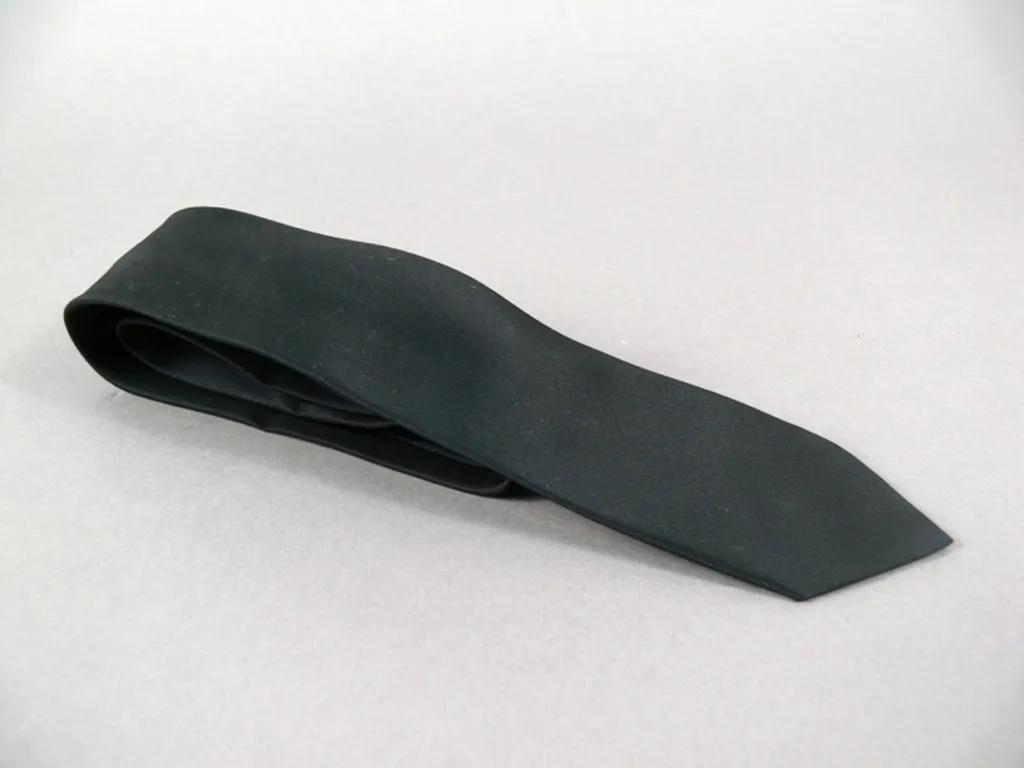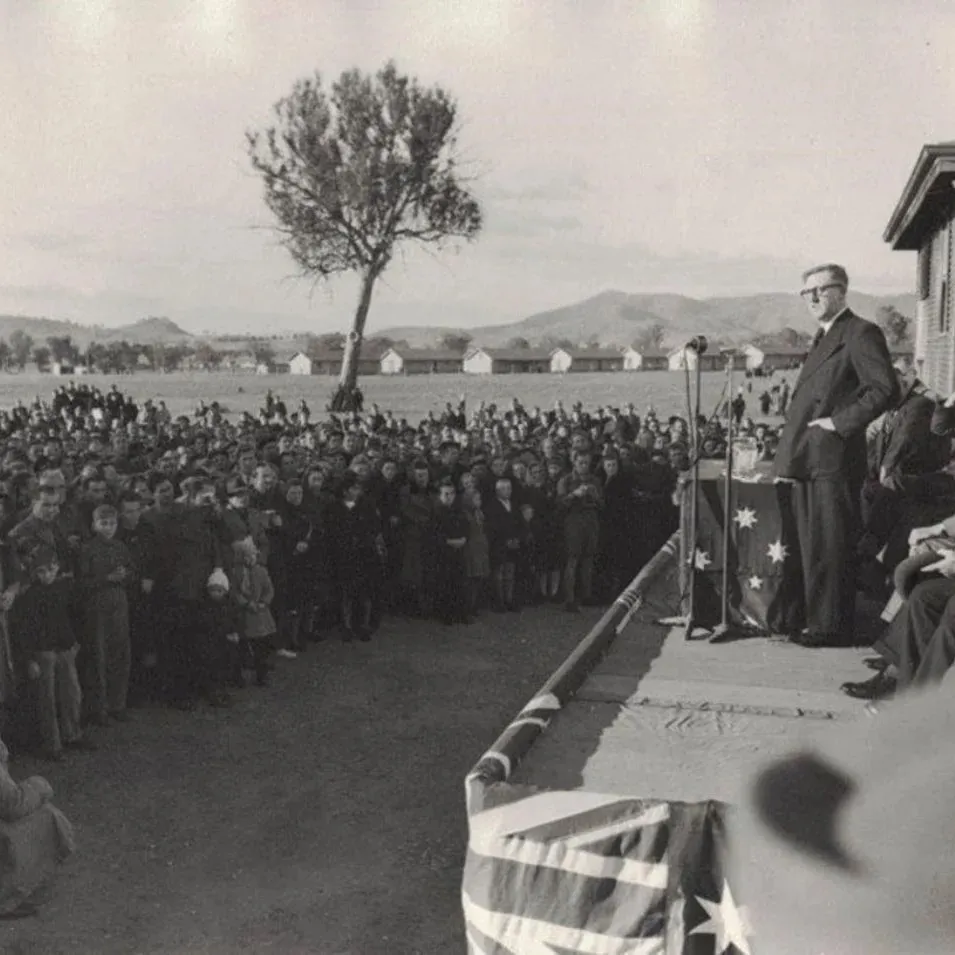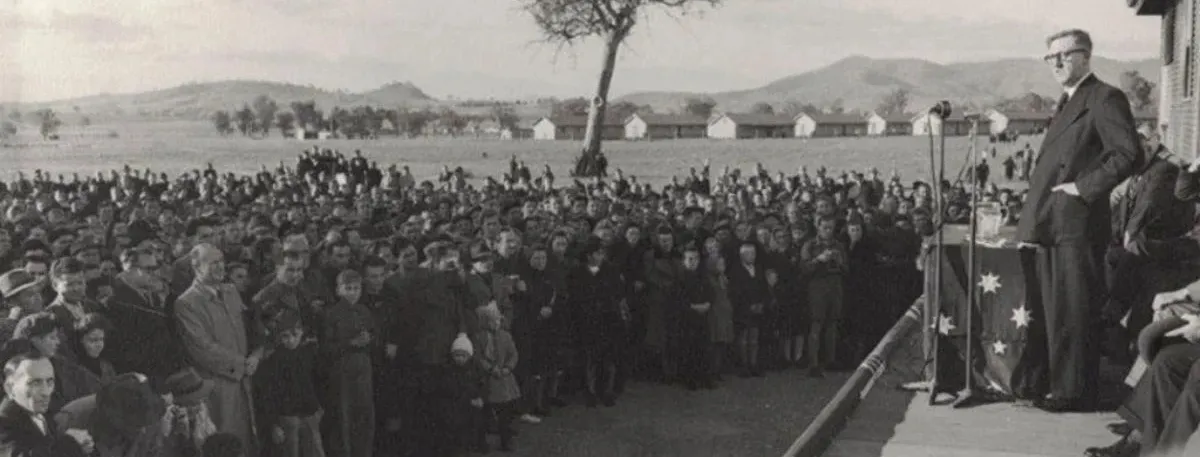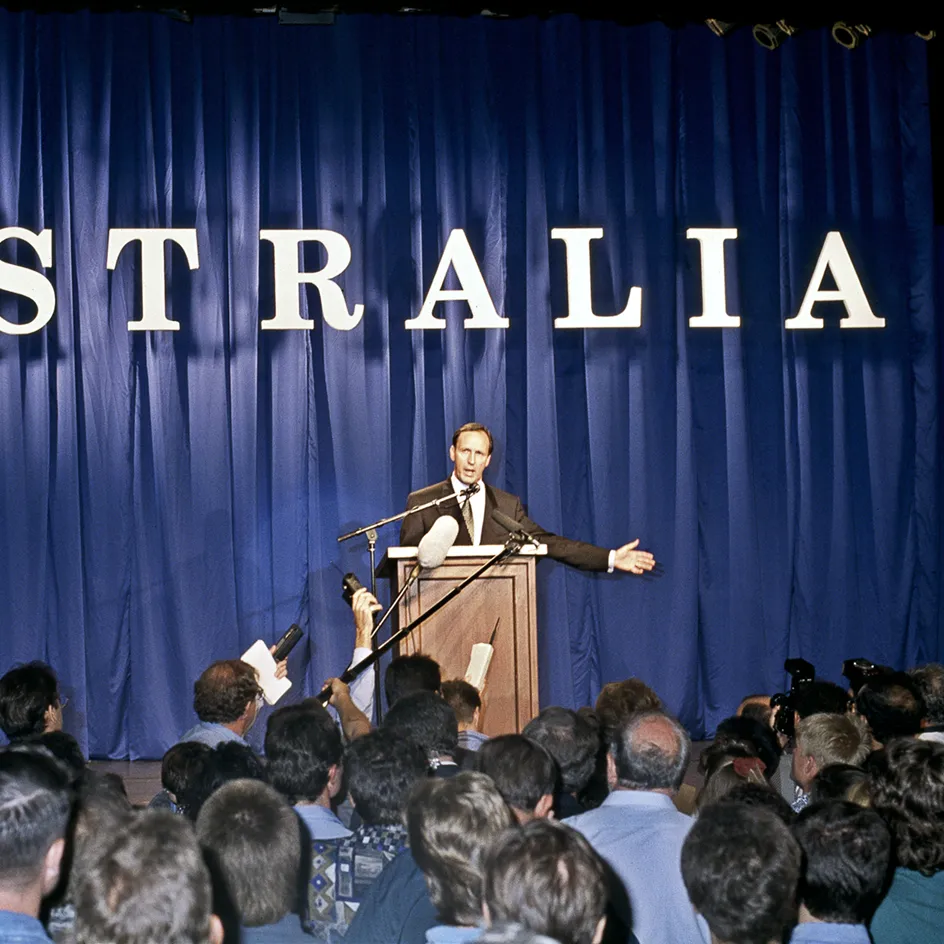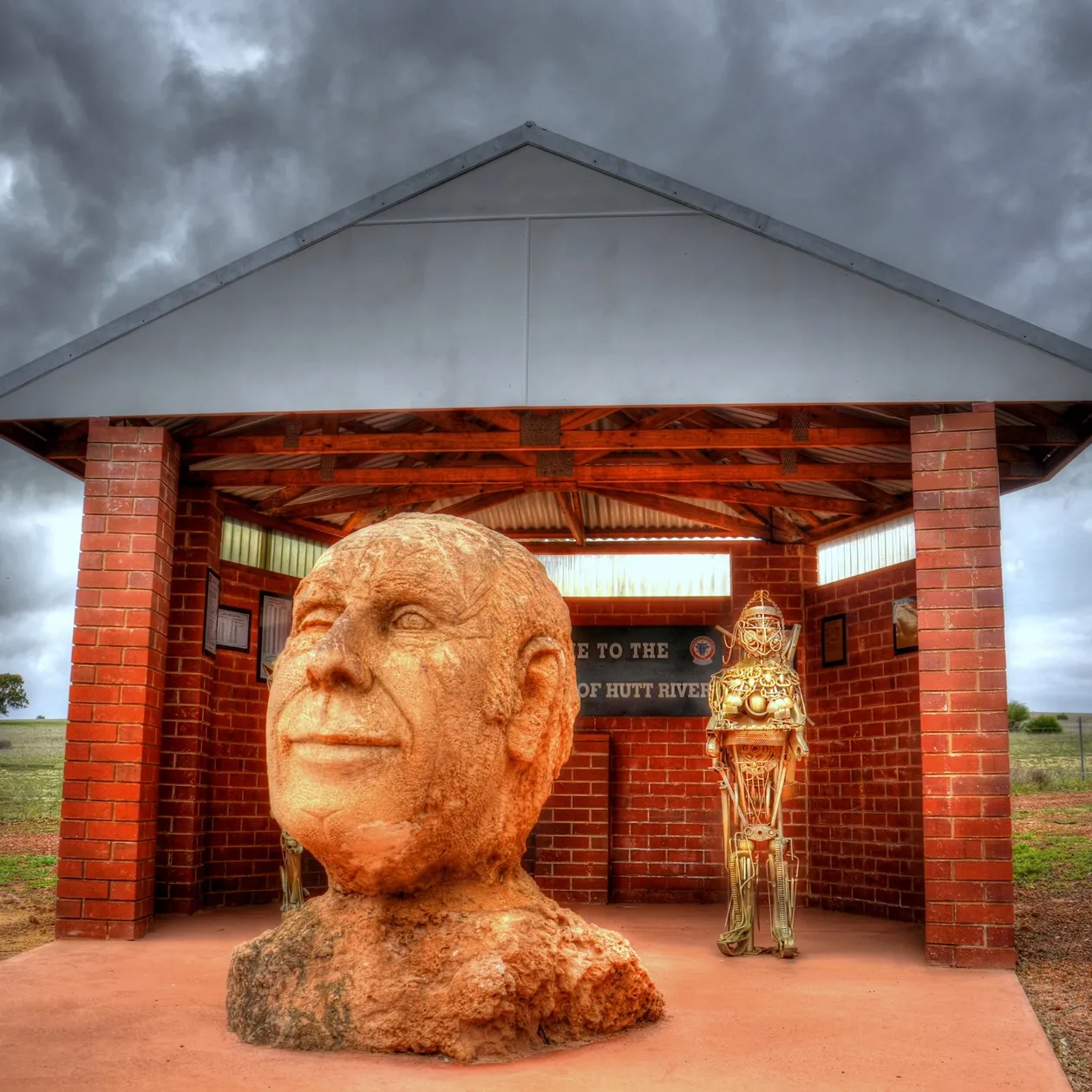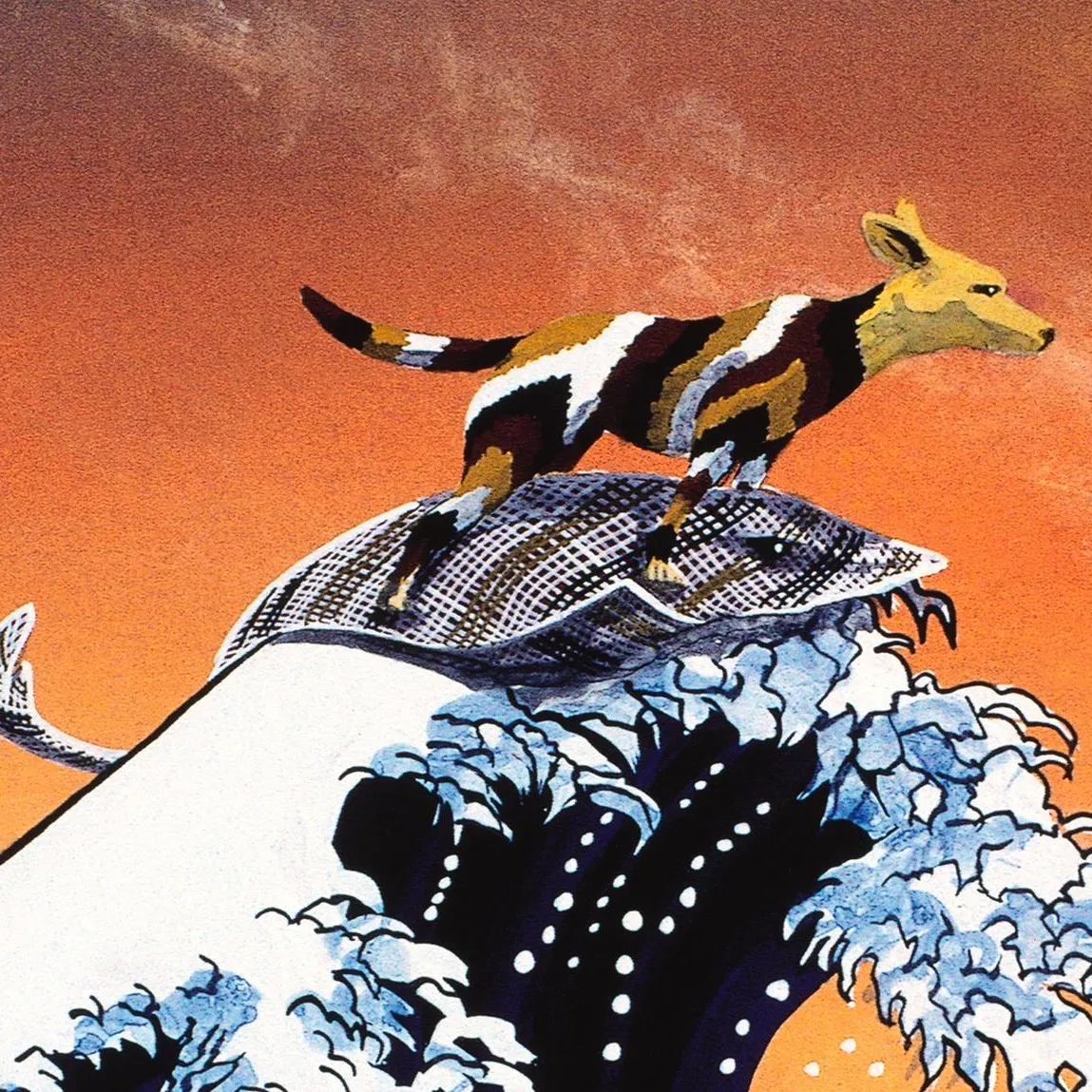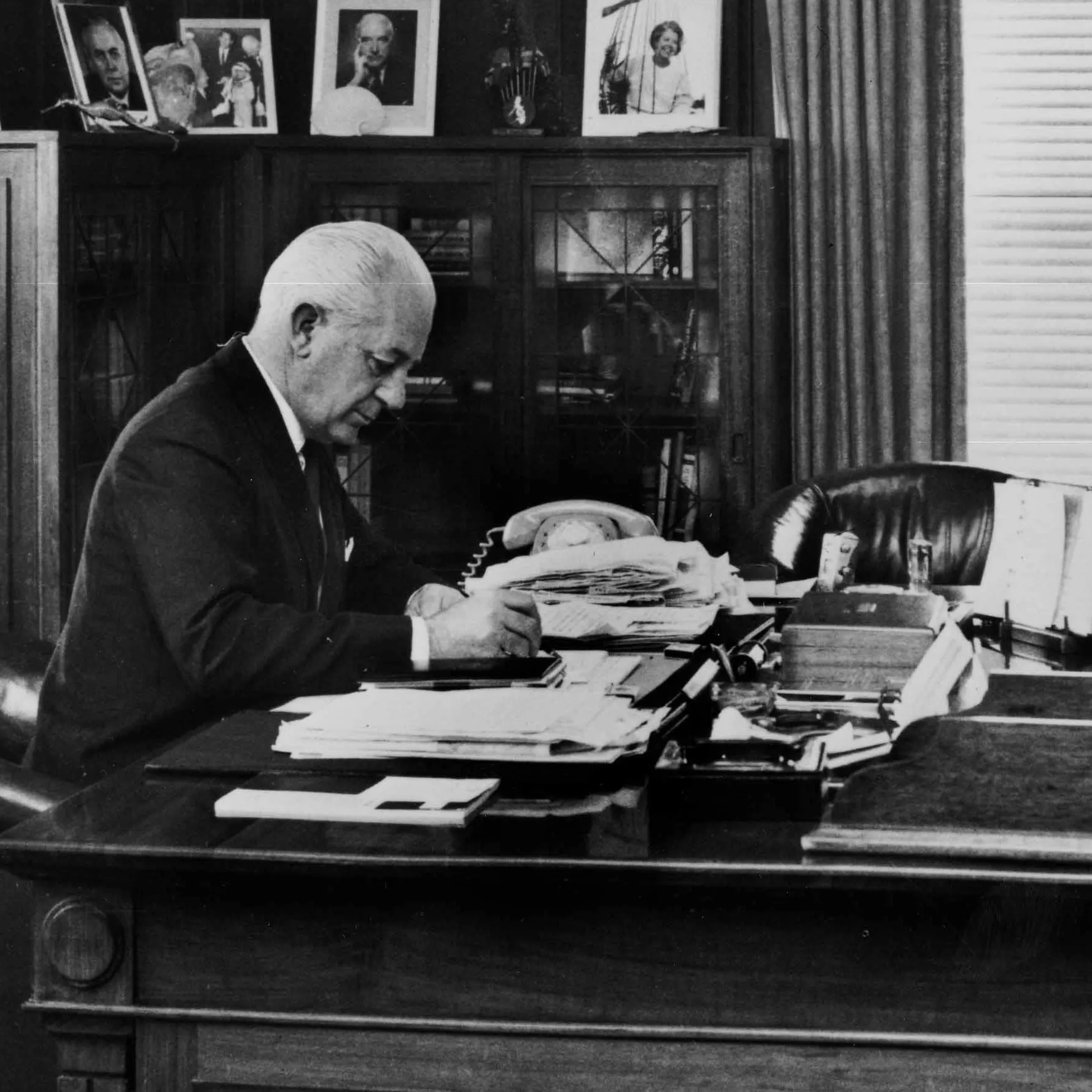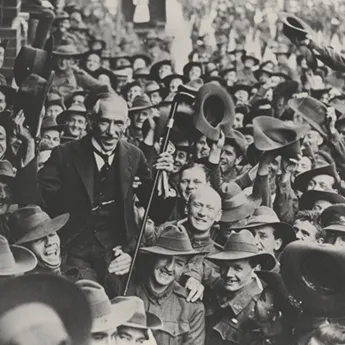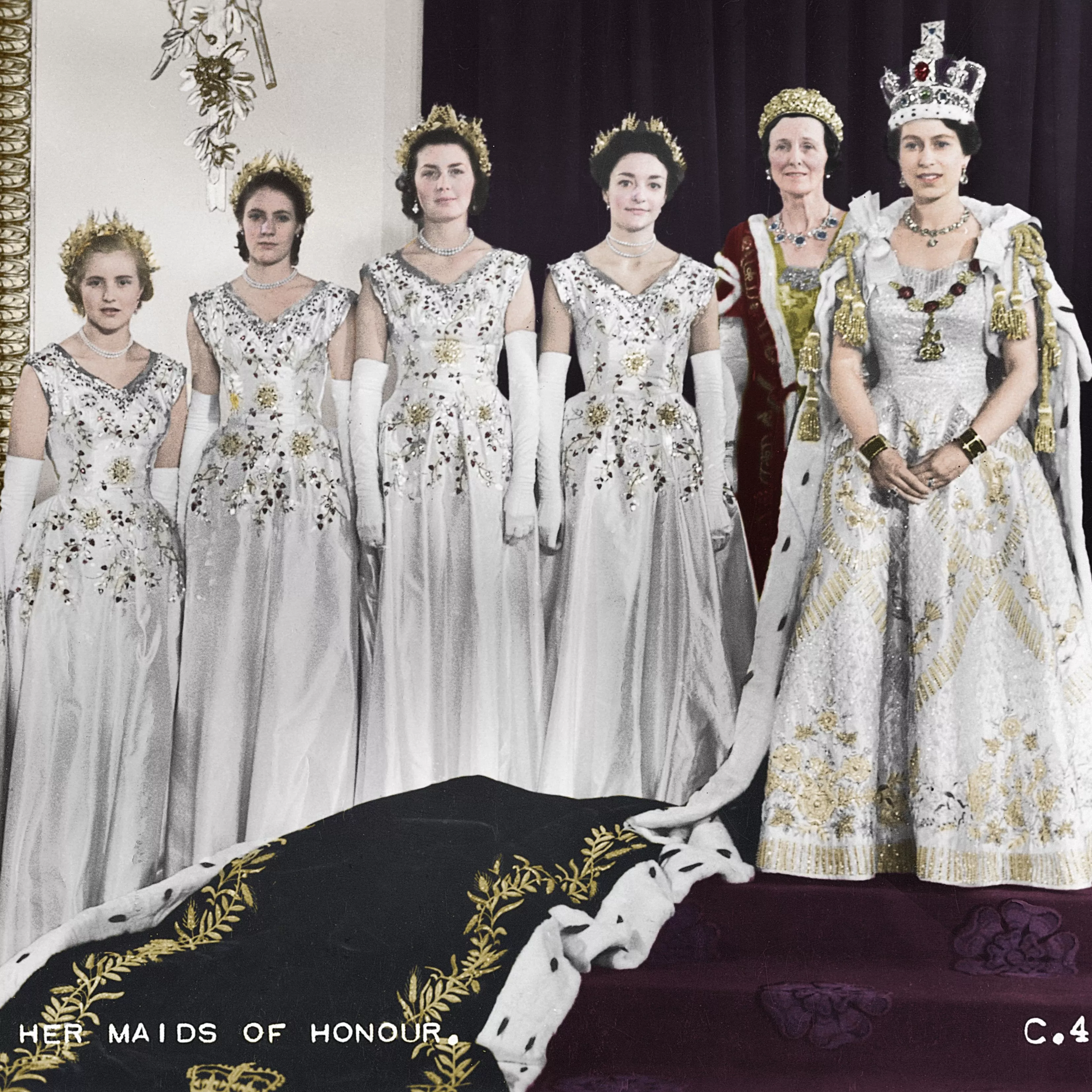Exploring the Arthur Calwell Collection
- DateTue, 18 Mar 2014
The Museum has some astonishing, beautiful, rare, significant and downright weird things in its collection.
Much of what the Museum collects is not displayed, as we have only a limited amount of space. The treasures buried within our vaults deserve to have their moment in the sun even if they can’t be in one of the galleries. To that end, let us show you a few items from the Arthur Calwell Collection, donated by the Calwell family.
Arthur Augustus Calwell (1896–1973) was active in the Australian Labor Party from an early age. Elected to the House of Representatives for Melbourne in 1940, he was a minister in the Curtin and Chifley governments, most notably Minister for Immigration from 1945 to 1949, in which role he oversaw Australia’s post-war migration scheme. He was Deputy Leader of the Labor Party under Doc Evatt from 1951 to 1960, and succeeded him as leader. Calwell came within two seats of ousting the Menzies government in 1961, and led Labor to a significant defeat in 1963 and a landslide defeat in 1966, after which he retired from the leadership, remaining in Parliament until 1972. The artefacts in the Calwell collection highlight the extraordinary life of one of Australia’s most notable political figures.
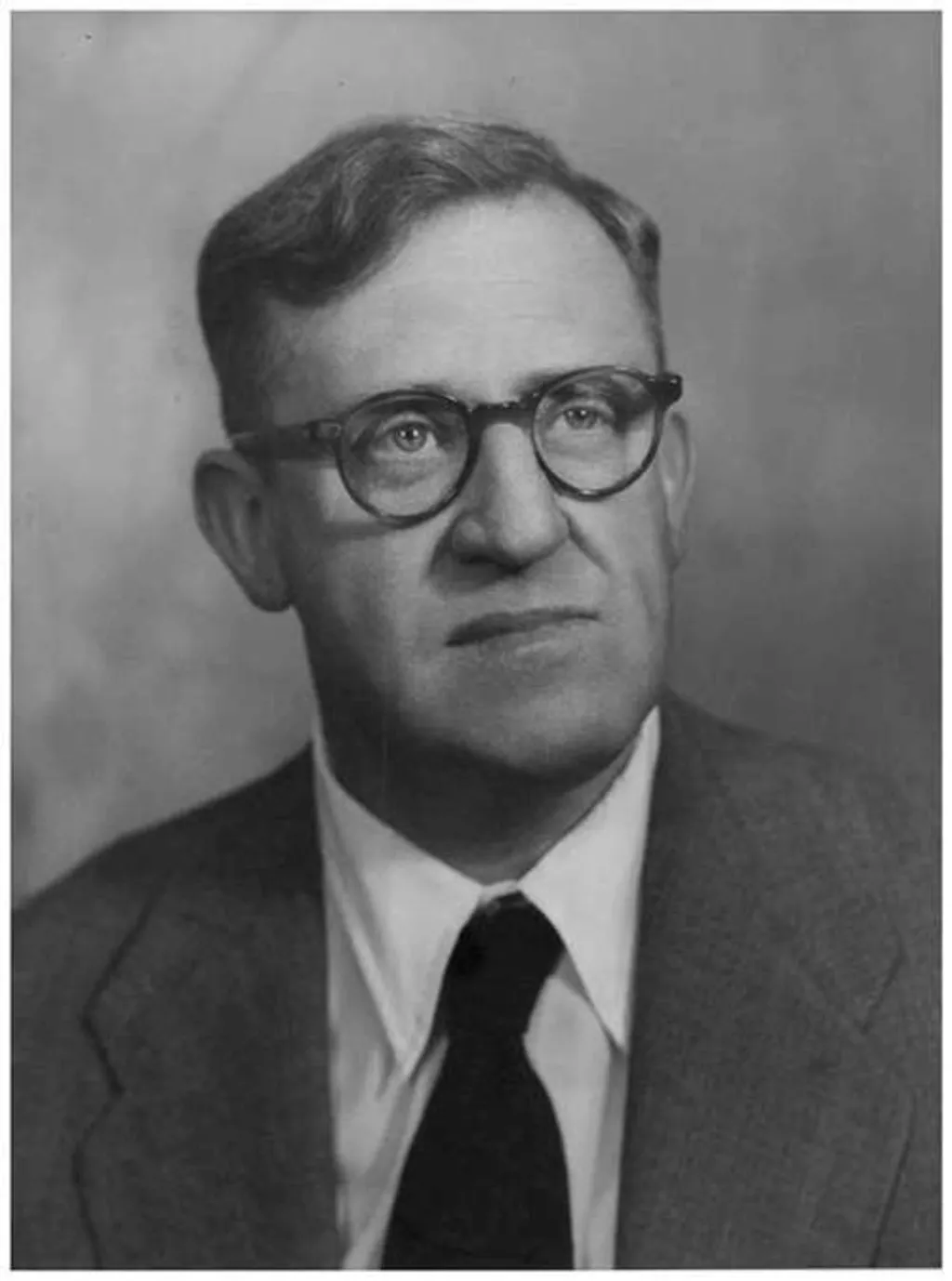
Arthur Augustus Calwell
One of the most important objects in the collection is the regalia of a Papal Knight. Calwell was inducted by Pope Paul VI in 1964 into the Order of St. Gregory the Great, the highest Papal honour that can be granted to a member of the laity. Calwell was a devout and active Catholic and had a strong relationship with the Church for his entire life. The Papal Knighthood he accepted showed this, accepted as it was at a particularly troubled time for the Australian Labor Party. Calwell’s loyalty to the Labor Party meant that he was accused by some of his fellow Catholics of putting his politics before his Church. His acceptance of a papal knighthood sent a signal to his critics that he could be both a loyal Roman Catholic and a loyal member of his party, and that the Vatican accepted him as such. In the often sectarian Australia of the 1950s it was sometimes difficult for politicians closely associated with the Catholic Church to convince non-Catholics that they did not put their religion before their Party or country. The regalia includes a citation, also in the collection. The Calwell Collection also includes a series of Bibles and a rosary belonging to Calwell, reinforcing his identity as a devout Catholic, a faith which defined him as a man and as a politician.

The regalia of a Papal Knight
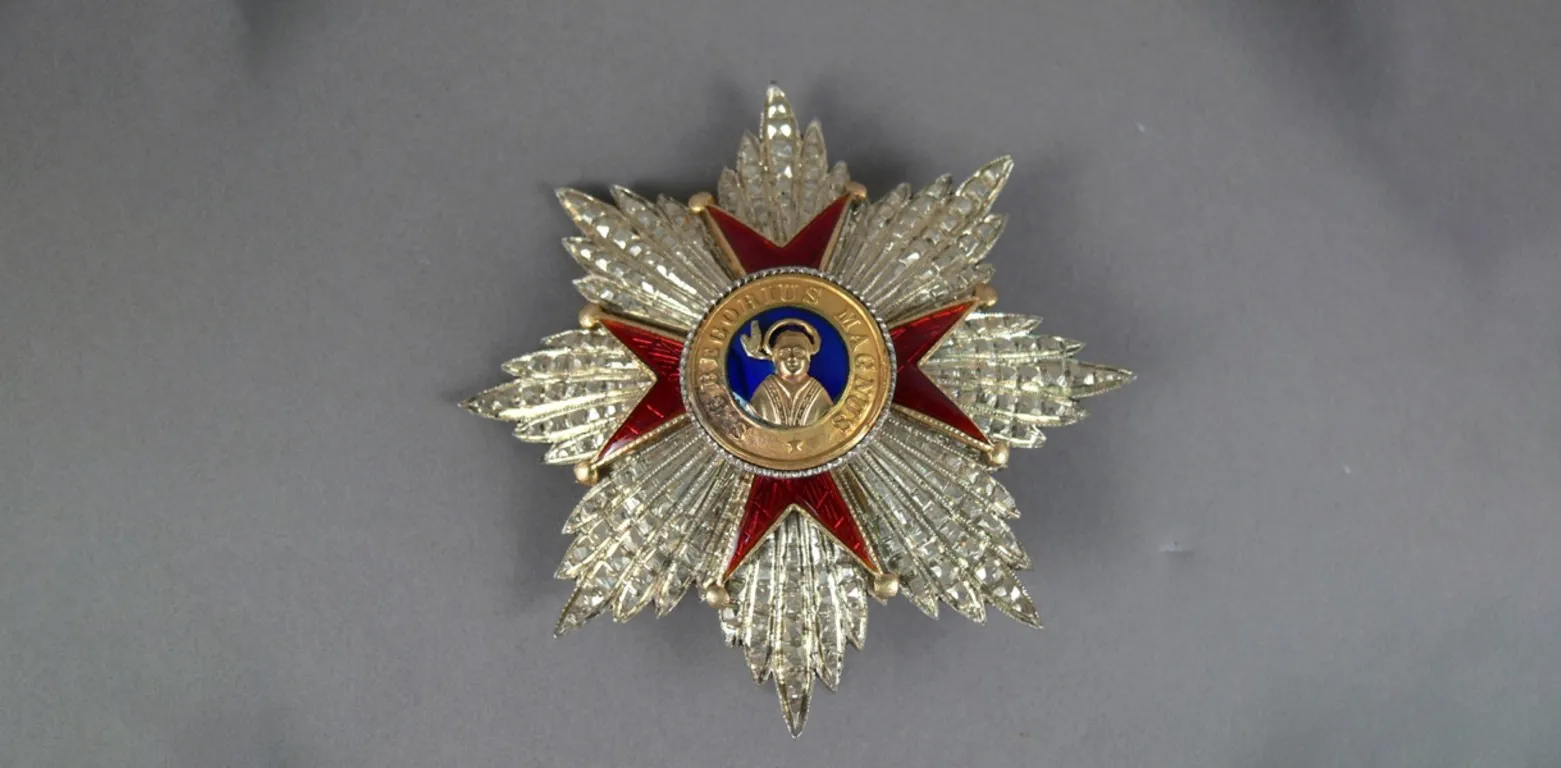
Regalia of a Papal Knight: detail
Another deeply important part of the Calwell Collection is material relating to Australia’s post-war migration scheme, of which Calwell was the architect. Examples are these objects gifted to Calwell by various migrant communities. A painting of a girl in traditional Barta dress was given by Latvian refugees, and a hand-crafted cushion by members of the Ukrainian community. These artefacts are important because they show the high regard that Calwell, Australia’s first Minister for immigration, was held in by the communities he had helped come to Australia, especially those from Eastern Europe who were fleeing the Soviet Union. Calwell’s migration scheme widened the sources of migrants to include Eastern Europe, something to which many Australian families owe their existence to this day.
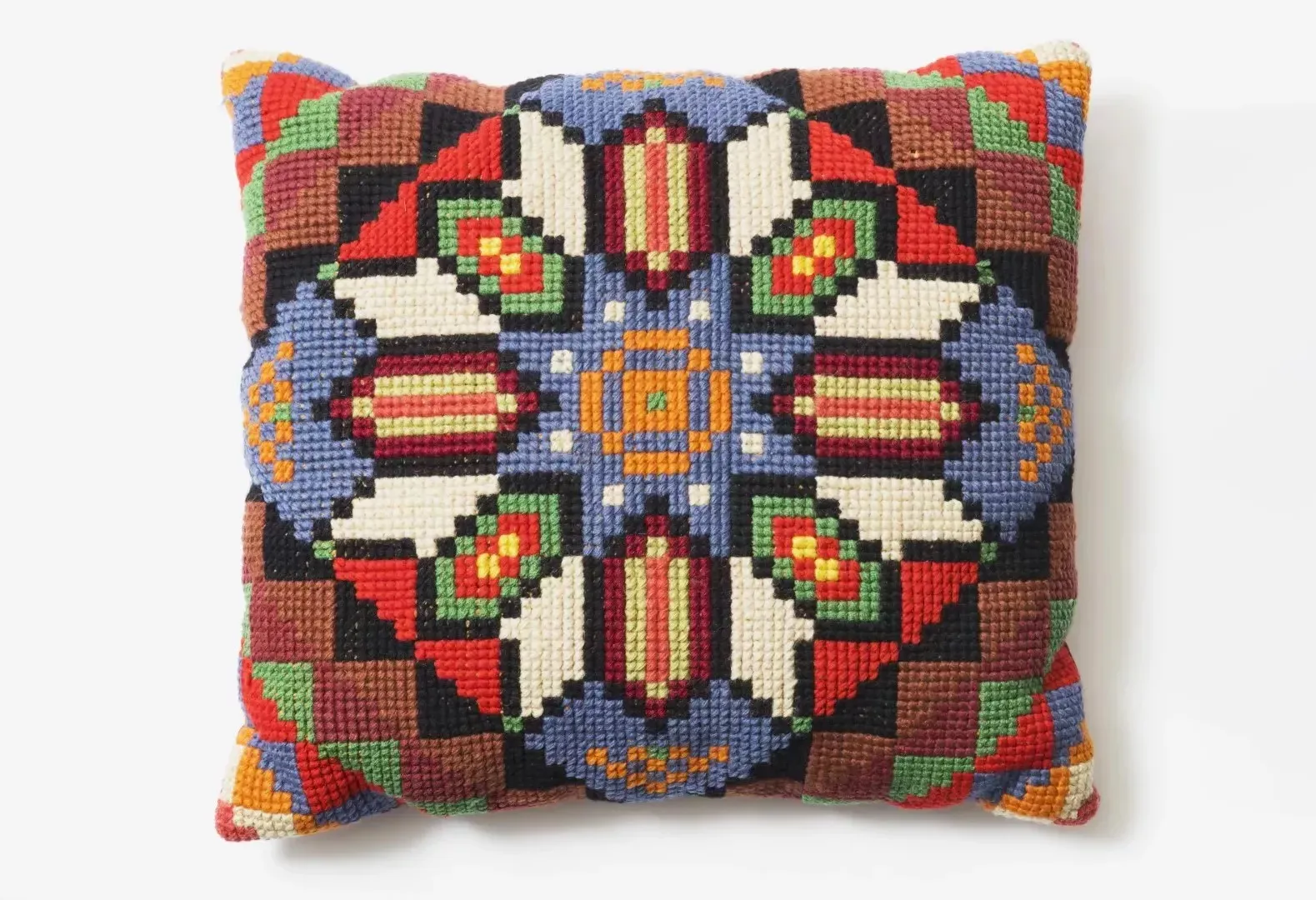
A hand-crafted cushion given to Calwell by members of the Ukrainian community.
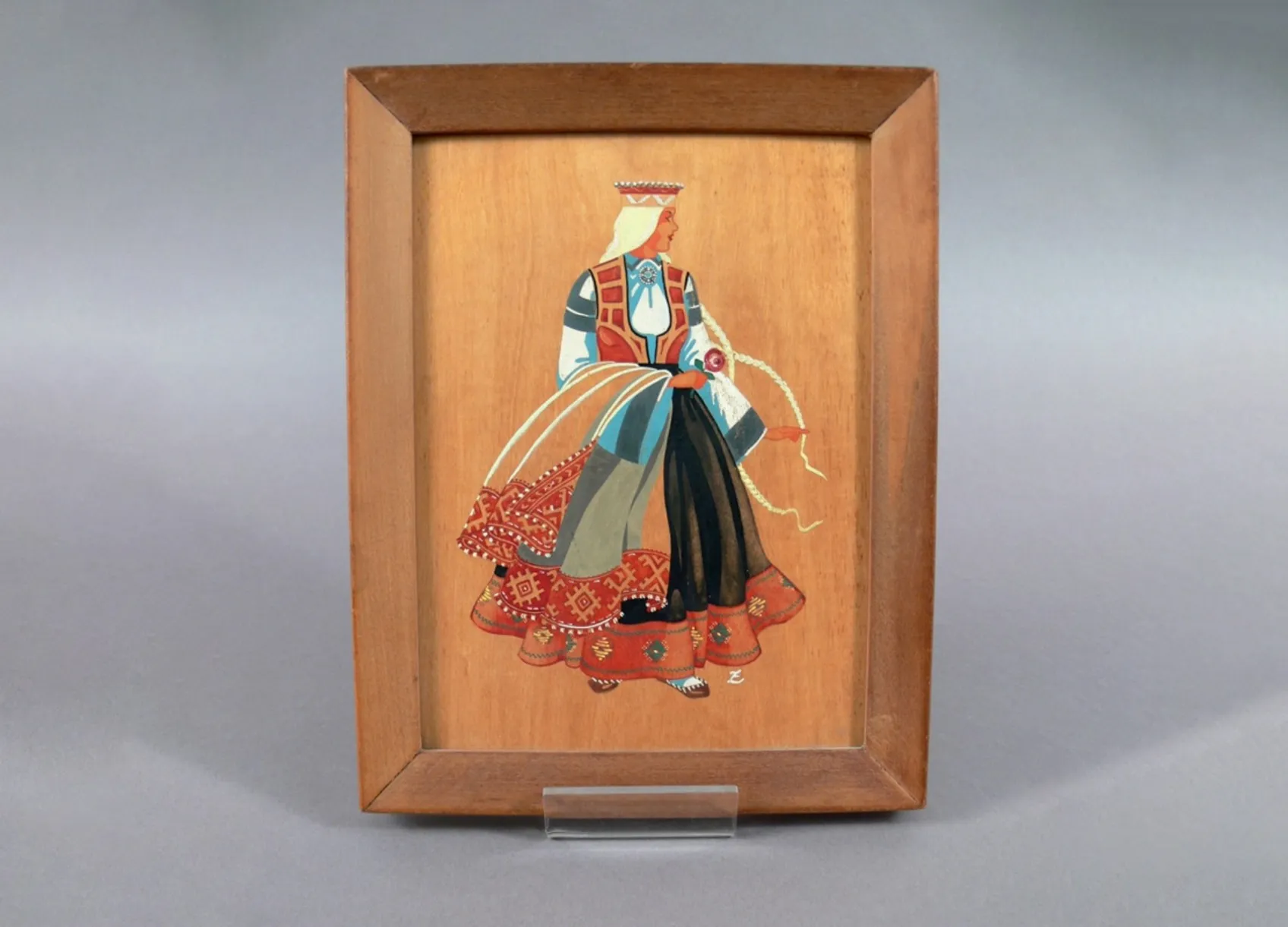
A painting of a girl in traditional Barta dress, given to Calwell by Latvian refugees.
The last piece of the Calwell Collection we will highlight in this column is his tie, which is typical of the ties he wore throughout his later career. Calwell was noted for wearing a black tie, which he did from 1948 when his son, Andrew, died at the age of 11. Calwell was deeply affected and was in mourning for the rest of his life. Another tie in this collection was given to participants in and observers of Operation Buffalo, the nuclear tests at Maralinga, South Australia, in 1956. Politicians almost always wear suits and ties in public, and their choice of tie can sometimes influence their public image. In Calwell’s case, they certainly did, and these ties show some of that image in a very personal way.
